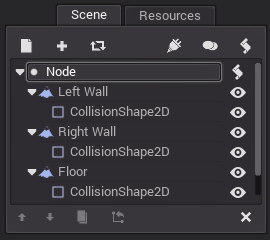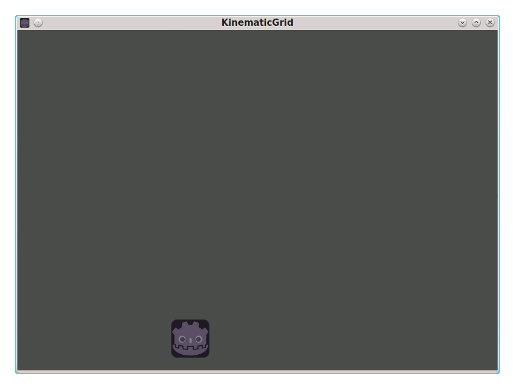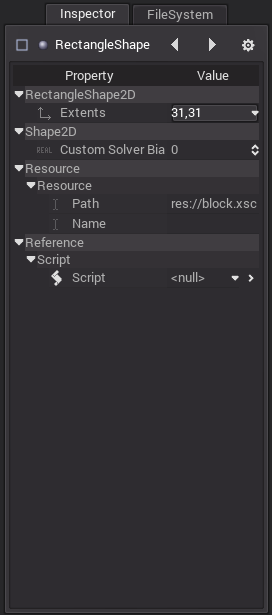The syllable is the next logical unit of speech after the phoneme. It’s one or more sounds that follow a pattern, usually (but not always) centered around a vowel. These syllables can then be strung together into words, which we’ll cover in the next part. For now, we’ll see what we can do with these intermediate building blocks.
The Syllable
Most linguistic discussions divide a syllable into two parts: the onset and the rhyme. That’s as good a place as any to start, so that’s what we’ll do. The rhyme part is further subdivided into a nucleus and a coda, again a useful distinction for us to work with. As the rhyme is often the more important, we’ll look at it first.
The nucleus is the center of the syllable, and it’s usually a vowel sound. Some languages, however, permit consonants here, too, and these are known as syllabic consonants. In English, these are the sounds at the ends of words like better, bottle, bottom, and button. A few languages (e.g., Bella Coola, some Berber languages) go even farther, to the point where the dividing line between syllables becomes so blurred as to be useless. By and large, though, vowels and the occasional syllabic consonant are the rule for the nucleus.
The coda is everything that follows the nucleus, and it’s a part that is, strictly speaking, optional. Languages like Hawaiian don’t have syllable codas at all, while Japanese only allows its “n” sound, as in onsen. A slightly more complex scheme allows most (if not all) of the consonants in the language to appear in the coda. Beyond that are languages that allow clusters of two, three, or even four consonants, with English a primary example of the last category, as in the words texts and strengths. (We’ll come back to that one later.) An important distinction we can draw is between open syllables without a coda and closed syllables with one. That will come into play later on, when we discuss stress.
Moving to the onset, we see another opportunity for consonants. This can range from nothing at all (though languages such as Arabic do require an onset) to a single consonant to a cluster of two or three. Again, English is ridiculously complex in this regard, at the far end of the scale in allowing three: split and (once again) strengths. Of course, this complexity is tempered by the fact that the first of those three must be /s/, which brings us to the topic of phonotactics.
Loosely speaking, phonotactics is a set of constraints on which sounds can appear in a syllable. It’s a different system for each language. They all have a few things in common, though. First, there’s a distinction between consonant and vowel. The simplest systems allow only syllables of CV, where C stands for any consonant, V for any vowel. An alternative is (C)V, where the parentheses around C mean that it’s optional.
The next step up in complexity comes with a coda or an onset cluster: CVC or CCV. (We’ll assume the parentheses indicated an optional consonant are implied.) These two are the most common, according to WALS Chapter 12, but they’re also where phonotactics becomes important. Which consonants can end a syllable? Which clusters are allowed? Although the first question has no universal answer, the second does have a trend that we can (or should) use.
Most languages that allow consonant clusters follow what’s called the sonority hierarchy. For consonants, it’s kind of a ranking of how “vowel-like” a sound is. Semivowels such as /w/ or /j/ are high on the list, usually followed by approximants like /l/ or /r/, then nasals, then fricatives, then stops. The rule, then, is that the allowed syllables have sonority that falls outward from the nucleus. In other words, it’s incredibly common for a language to allow a syllable onset like /kɾ/, but rare for /ɾk/ to be permitted. In the coda, that’s reversed, as the sounds with higher sonority come first. English bears this out: trust is the sequence stop – approximant – vowel – fricative – stop. /s/ (and /z/, for that matter) is special, though. Many languages allow either sound to appear in a place where the hierarchy says it shouldn’t go, like in stop or tops. That’s also how English gets three consonants in an onset: /s/ is always the first.
And, of course, there are the combinations that aren’t allowed by a language despite the sonority hierarchy saying they’re fine. In English, these are mostly combinations of stops and nasals. We don’t pronounce the k in knight or the p in pneumonia, but other languages do. Conversely, those other languages have their own rules about what’s forbidden.
For a conlang, there’s really no best option for syllable structure. CV is simple, true, but it’s also limiting, and it creates its own problems. Generally, less complex syllables mean longer words, since there aren’t that many permutations that fit the rules. On the other hand, something too complicated can devolve into a mess of rules about which phoneme is allowed where.
Auxiliary languages, then, should probably stick with something in the middle of the spectrum, like CVC or a very restricted form of CCVC. Conlang artisans can go with something a bit more bizarre, especially if they’re never intending their languages to be spoken by mere mortals. And, of course, an alien race might have a different sonority hierarchy altogether, and the idea of “syllable” might make as little sense as it does for the Nuxalk of British Columbia.
Stress and Accent
However we chose to make syllables, whether CV or CVC or CCCVCCCC, we can now put them together to form words. Some words need just one. (Like every word in that sentence!) Many will need more, though, and some people find joy in hunting down the longest possible words in different languages.
Once we have more than one syllable in a word, there can be a battle for supremacy. Stress is a way of marking a syllable so that it stands out from those around it. Stressed syllables are typically spoken louder or with more emphasis. (An alternative is pitch accent, where the emphasized syllable is spoken with a different tone. This can happen even in languages that don’t actually have phonemic tone, including Japanese and Swedish.)
There doesn’t have to be any special meaning attached to stress. Many languages fix the position of the stressed syllable, so it’s always the last, the next to last (penultimate), or the third to last (antepenultimate). Others go in the opposite direction, stressing the first (initial), second, or third syllable from the beginning. In any of these languages, the stress falls in a specified place that doesn’t change, no matter what the word is. Examples (according to [WALS Chapter 14])(http://wals.info/chapter/14) include:
- Final stress: Persian, Modern Hebrew
- Penultimate: Swahili, Tagalog
- Antepenultimate: Modern Greek, Georgian
- Initial: Finnish, Czech
- Second syllable: mostly smaller languages such as Dakota and Paiute
- Third syllable: almost no languages (the only example in WALS is Winnebago)
Conversely, a language can also have stress that doesn’t seem to follow any rules at all. This free stress occurs in languages like English, where (as usual) it is weirder than it looks. In fact, English stress is phonemic, as it can be used to tell words apart. The canonical example is permit, which is a noun if you stress the first syllable, but a verb when you stress the second. In languages with free stress, it must often be learned, and it can be indicated in the orthography by diacritics, as in Spanish or Italian. Free stress can even vary by dialect, as in English laboratory.
It’s rare that a language has completely unpredictable stress. Usually, it’s determined by the kind of syllables in a word. This is where the distinction between open and closed syllables comes into play. Closed syllables tend to be more likely to take stress (i.e., they’re “heavy”), while open (“light”) syllables are stressed only when they are the only option. (Some languages consider long vowels and diphthongs to be heavy, too, but this isn’t universal.) It’s entirely possible, for example, for a language to normally have penultimate stress, but force the stress to move “back” to the antepenultimate if the final two syllables are light.
Stress in conlangs might be entirely unpredictable. All types are represented, in similar proportions to the real world, although pitch accent is one of those things that conlangers find fascinating. Auxiliary languages tend to have stress that’s either fixed or easily predictable; Esperanto’s fixed penultimate is a good example. Artistic languages are more likely to have free stress, though some of this might be due to laziness on the part of their creators. Fixed is easier, of course, since it’s mechanical, but free stress has its advantages. (An interesting experiment would be to create a language with free, unmarked stress, then come back to it a few years later and try to read it.)
Rhythm and Timing
Rhythm is kind of a forgotten part of conlanging. (I’m guilty of it, too.) It’s most closely tied to poetry, obviously, but the same concept creeps into spoken language, as well. For this post, the main point of rhythm is secondary stress. This kind of stress is lighter than the main, primary stress we discussed above, and it mostly occurs in long words of at least four syllables. Now, some languages don’t need (or have) a rhythmic pattern, but it can make a conlang feel more natural.
Generally, a heavy syllable is going to be more likely to get secondary stress, especially if there is a single, light syllable between it and the main stress. (In which direction? Whichever one you use to find the primary stress.) Languages without heavy syllables (such as pure CV languages) will probably have a pattern of stressing alternate syllables; in a penultimate-stress language, this would be the second to last, fourth to last, and so on.
Somewhat related to rhythm is timing, another under-appreciated aspect of a language. In languages such as Spanish or Italian, unstressed syllables are treated essentially the same as those that are stressed, and each syllable sounds like it takes the same amount of time. In others, including English, an unstressed syllable is spoken more quickly, and its vowel is reduced; here, it seems to be the amount of time between stressed syllables that stays constant.
For the most part, conlangers don’t need to worry much about rhythm and timing. However, if you’re writing poetry (or song) in your language, it will certainly come into play. Any post I do about that is a long way off.
The Mora
Some languages don’t use the syllable as the basis for stress and rhythm. Instead, these languages (including Japanese and Ancient Greek, to name but two) use the mora (plural morae). This is, in essence, another way of looking at light and heavy syllables. Basically, a short vowel in a syllable nucleus counts for one mora, while long vowels or diphthongs are two. A coda consonant then adds another mora, giving a range of one to three. Thus, a syllable that has one mora is light, and two morae make a heavy syllable. Three morae can make a “superheavy” syllable, though some languages don’t have these, and four seems to be impossible.
In a moraic system, stress (or pitch, if using pitch accent) can then be assigned to heavier syllables. Rhythm, too, would be based on the mora, not the syllable. The distinction can even be shown in writing, as in the Japanese kana. The end result, though, can be explained in the same terms either way. It’s just another option you can look into.
Conclusion
That was a lot to cover, and I only scratched the surface of syllables. But we can now make words, and that was worth a long post. Next up is a combination post for both Isian and Ardari. Since the theory’s out of the way, the implementation won’t take much explanation, so I’ve decided to cover both languages at the same time. After that, we’ll actually start diving into grammar. See you next week!



